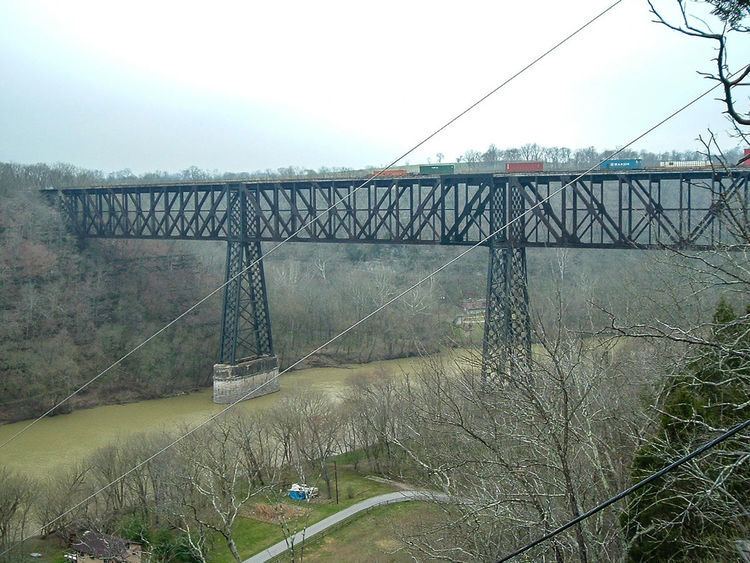Carries Railroad Height 84 m Opened 1877 | Address Wil, KY 40390, USA Total length 343 m Clearance below 84 m | |
 | ||
Similar Young's High Bridge, High Bridge Park, Cincinnati Southern Bridge, Bluegrass Railroad and Muse, Fourteenth Street Bridge | ||
High bridge of kentucky lexington and danville railroad
High Bridge is a railroad bridge crossing the Kentucky River Palisades, connecting Jessamine and Mercer counties, Kentucky. Constructed in 1876, it is the first cantilever bridge in the United States. It has a three-span continuous under-deck truss used by Norfolk Southern Railway to carry trains between Lexington and Danville. It has been designated as a National Civil Engineering Landmark.
Contents
- High bridge of kentucky lexington and danville railroad
- High bridge of kentucky in wilmore ky with train footage 04 12 2016
- History
- References
High bridge of kentucky in wilmore ky with train footage 04 12 2016
History
A bridge was begun in the 1850s for the Lexington and Danville Railroad. Designed by John A. Roebling (who designed the Brooklyn Bridge) as a suspension bridge supported by stone towers, it was not completed. The towers for the suspension cables were built and portions remained until 1929.
The bridge was redesigned of cantilever design and opened in 1877 on the Cincinnati Southern Railway. It was 275 feet (84 m) tall (According to the bronze plaque beside it, it is 308 ft.) and 1,125 feet (343 m) long: the tallest bridge above a navigable waterway in North America and the tallest railroad bridge in the world until the early 20th century. With a three-span continuous under-deck truss, it was designed by Charles Shaler Smith and was the first cantilever bridge in the United States. In 1879 President Hayes and Gen. William Tecumseh Sherman attended the dedication.
The current bridge, designed by Gustav Lindenthal, was built around the existing structure in 1911 and expanded to two tracks in 1929.
In 2005 the state and county jointly reopened a park near the bridge (which had been closed since the mid 1960s) at the top of the palisades above the river. It included a restored open air dance pavilion, first used in the 19th century; as well as a new playground, picnic area, and viewing platform that overlooks the bridge and river's edge from the top of the palisades.
